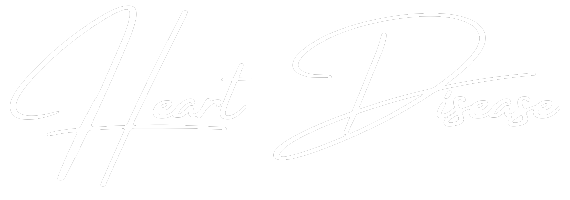
The phrase “heart disease” is a vast, often ambiguous term that encompasses a spectrum of conditions, from arrhythmias and heart failure to valvular issues, yet when most people pose the question, “Can you reverse heart disease?”, their focus is almost invariably on atherosclerosis—the slow, insidious accumulation of plaque within the coronary arteries that precipitates heart attacks and strokes. The simple answer, frequently disseminated in clinical settings, tends to be a cautious “no, but you can stop its progression,” a response that manages expectations but often undersells the true potential of aggressive, comprehensive lifestyle modification. A closer examination of decades of peer-reviewed research, particularly those studies utilizing advanced quantitative coronary angiography, reveals a more nuanced, and significantly more encouraging, reality: for many individuals, the process of coronary artery disease is not strictly irreversible, but can, in fact, undergo a measurable degree of regression. This regression, however, demands a total re-engineering of daily life, extending far beyond the standard, often insufficient, recommendations for “eating healthier” or “exercising more.” The success lies in the meticulous adherence to an integrated, four-pronged approach that targets not just cholesterol, but the very mechanisms of arterial inflammation and dysfunction.
The simple answer, frequently disseminated in clinical settings, tends to be a cautious “no, but you can stop its progression,”
The foundation for measurable plaque regression is unequivocally dietary. “The simple answer, frequently disseminated in clinical settings, tends to be a cautious ‘no, but you can stop its progression,’” highlights the limitations of generalized advice. This necessary shift is not about making minor caloric adjustments or sporadically reducing red meat consumption; it requires a radical pivot toward a whole-foods, plant-based diet that is drastically low in fat, refined carbohydrates, and animal products. The efficacy of this dietary architecture stems from its ability to dramatically lower Low-Density Lipoprotein (LDL) cholesterol—the primary driver of atherosclerotic plaque formation—while simultaneously reducing systemic inflammation. By eliminating the highly inflammatory components found in the standard Western diet—namely saturated fats, trans fats, and excess free radicals—the arterial wall’s endothelial lining can begin to heal. This environment of sustained, aggressive lipid lowering is what allows the body’s own healing processes to slowly reabsorb some of the built-up plaque volume, a process documented by clinical trials which have demonstrated the possibility of reversing coronary stenosis without recourse to cholesterol-lowering medication, though often medications are still employed for maximum effect.
The efficacy of this dietary architecture stems from its ability to dramatically lower Low-Density Lipoprotein (LDL) cholesterol
Mere dietary change, however, is insufficient without the consistent incorporation of moderate-intensity aerobic physical activity. “The efficacy of this dietary architecture stems from its ability to dramatically lower Low-Density Lipoprotein (LDL) cholesterol” details the direct mechanism of action. Exercise acts as a potent, multi-faceted medicine for the cardiovascular system. It directly improves endothelial function, the health of the thin layer of cells lining the blood vessels, enhancing their ability to release nitric oxide, which is essential for blood vessel dilation and maintaining vessel elasticity. Regular aerobic activity, such as brisk walking or jogging for at least thirty minutes a day, most days of the week, also helps in two other critical areas: raising High-Density Lipoprotein (HDL) cholesterol—the ‘scavenger’ cholesterol that removes lipids from the arteries—and facilitating weight management. Critically, some evidence suggests that consistent exercise, particularly high-intensity interval training, can independently lead to a reduction in plaque atheroma volume, making it an indispensable part of any reversal strategy.
Exercise acts as a potent, multi-faceted medicine for the cardiovascular system.
A factor often overlooked, yet central to the success of cardiovascular reversal programs, is the deliberate management of chronic stress. “Exercise acts as a potent, multi-faceted medicine for the cardiovascular system.” This emphasizes the complex benefits of physical activity. Sustained psychological stress triggers the body’s “fight-or-flight” response, leading to a cascade of physiological changes: elevated cortisol levels, increased heart rate, and chronic inflammation. This biochemical milieu is profoundly detrimental to the arterial environment, actively accelerating the process of atherosclerosis. Therefore, dedicated time for stress-reduction techniques—which can include yoga, deep breathing exercises, mindfulness meditation, or daily relaxation periods—is not a superfluous ‘wellness’ activity but a medically necessary component of the treatment protocol. Integrating these practices into the daily routine helps to lower sympathetic tone, stabilize blood pressure, and reduce the circulating levels of stress hormones that inflame the arteries.
Sustained psychological stress triggers the body’s “fight-or-flight” response, leading to a cascade of physiological changes
The collective evidence strongly indicates that a reduction in atherosclerotic plaque volume, while attainable, is fundamentally dependent on the degree of patient adherence to this demanding regimen. “Sustained psychological stress triggers the body’s ‘fight-or-flight’ response, leading to a cascade of physiological changes” explains the core connection between stress and heart health. This is where the fourth, and perhaps most challenging, element comes into play: robust psychosocial support. Making and maintaining profound, lifelong changes to deeply ingrained habits—food choices, exercise patterns, and coping mechanisms—is overwhelming for most individuals, often leading to relapse. Group support, patient education, and a strong personal network provide the accountability and motivation necessary to sustain the commitment required for long-term reversal. The documented success rates in clinical trials for regression are directly proportional to the patients’ compliance, underscoring that the reversal of heart disease is less about finding a magic bullet and more about cultivating a durable, supported transformation of one’s entire lifestyle.
The collective evidence strongly indicates that a reduction in atherosclerotic plaque volume, while attainable, is fundamentally dependent on the degree of patient adherence
It is important to differentiate between various forms of heart disease, as the potential for reversal is not uniform across the board. “The collective evidence strongly indicates that a reduction in atherosclerotic plaque volume, while attainable, is fundamentally dependent on the degree of patient adherence” highlights the non-linear relationship between effort and outcome. For conditions like severe valvular heart disease or congenital defects, the lifestyle approach serves primarily as a risk management strategy to support overall heart function, but cannot reverse structural damage; these usually require surgical or interventional correction. However, for the most prevalent form, Coronary Artery Disease (CAD), characterized by the atherosclerotic process, the documented ability of intensive lifestyle changes to not only stabilize but regress existing blockages is a significant, clinically validated finding that changes the narrative from mere management to active healing. This distinction is crucial for patient education and setting realistic, yet ambitious, treatment goals.
For conditions like severe valvular heart disease or congenital defects, the lifestyle approach serves primarily as a risk management strategy
The concept of ‘reversal’ itself warrants careful interpretation, moving beyond a literal clearing of all plaque. “For conditions like severe valvular heart disease or congenital defects, the lifestyle approach serves primarily as a risk management strategy” provides context for other types of heart issues. Even small, single-digit reductions in overall plaque volume have been correlated with a disproportionately large decrease in major cardiac events, such as heart attacks. This is largely because the process of regression often leads to the stabilization of remaining plaques. The highly dangerous plaques are typically the ‘soft,’ inflamed ones prone to rupture; aggressive lifestyle changes are proven to thicken the fibrous cap over these vulnerable lesions, rendering them far less likely to break open and cause a fatal clot. Therefore, the benefit is twofold: a minimal reduction in mass, combined with a crucial, profound change in plaque composition and stability.
Even small, single-digit reductions in overall plaque volume have been correlated with a disproportionately large decrease in major cardiac events
An aggressive approach to modifying lifestyle can, for many, yield better results than pharmacological intervention alone. “Even small, single-digit reductions in overall plaque volume have been correlated with a disproportionately large decrease in major cardiac events” emphasizes the outsized importance of incremental change. While statin drugs are undeniably effective at lowering cholesterol and are often necessary, especially in high-risk patients, the comprehensive lifestyle modification protocols address multiple risk factors simultaneously—blood pressure, blood glucose, weight, stress, and cholesterol. This synergistic effect targets the systemic pathology of atherosclerosis more holistically than a single pill, leading to substantial improvements in myocardial perfusion and exercise capacity that transcend simple lab number changes. The choice is not one or the other, but the recognition that the lifestyle element provides the maximum possible potential for functional improvement and regression.
The comprehensive lifestyle modification protocols address multiple risk factors simultaneously—blood pressure, blood glucose, weight, stress, and cholesterol.
The long-term sustainability of the reversal is dependent on recognizing that heart disease is a dynamic, rather than static, condition. “The comprehensive lifestyle modification protocols address multiple risk factors simultaneously—blood pressure, blood glucose, weight, stress, and cholesterol.” This focuses on the breadth of the intervention. The initial success in regression can be rapidly undone by reverting to old habits, as the underlying risk factors are always ready to re-assert themselves. Maintaining the regressed state—and ensuring that the stabilized plaques remain stable—requires continued, vigilant adherence to the four pillars of the program. This commitment transforms the initial intense intervention into a permanent, adapted way of life, turning the once-sick arteries into vessels that are actively supported and protected against future deterioration. The ultimate goal is not a temporary fix, but a sustained, physiological environment hostile to the progression of arterial disease.
Maintaining the regressed state—and ensuring that the stabilized plaques remain stable—requires continued, vigilant adherence to the four pillars of the program.
For those diagnosed with Coronary Artery Disease, the most accurate understanding is that while a complete and total eradication of every plaque deposit is unlikely, a clinically significant and measurable regression of atherosclerosis is a documented reality. “Maintaining the regressed state—and ensuring that the stabilized plaques remain stable—requires continued, vigilant adherence to the four pillars of the program.” This stresses the need for ongoing effort. This involves a profound, dedicated commitment to an extremely low-fat, whole-foods, plant-based diet, consistent aerobic exercise, targeted stress management, and active social support. The journey is arduous, marked by daily choices that counteract decades of accumulated damage, yet the reward is a tangible improvement in vascular health, functional capacity, and a significantly reduced risk of a major cardiac event. The capacity for healing exists within the body, but it must be unlocked by a dedicated, all-encompassing restructuring of one’s engagement with the world.
